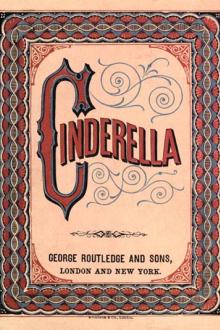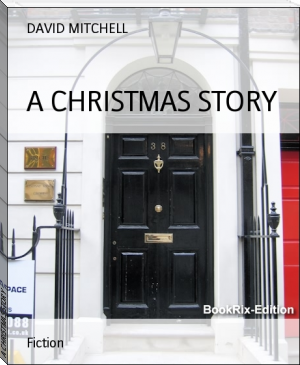Folk-lore of Shakespeare by Thomas Firminger Thiselton Dyer (well read books .TXT) 📕

"Crowdero, whom in irons bound, Thou basely threw'st into Lob's pound."
[16] Mr. Dyce considers that Lob is descriptive of the contrast between Puck's square figure and the airy shapes of the other fairies.
[17] "Deutsche Mythologie," p. 492.
[18] See Keightley's "Fairy Mythology," pp. 318, 319.
It occurs, also, in Massinger's "Duke of Milan" (iii. 2), where it means "behind the arras:"
Read free book «Folk-lore of Shakespeare by Thomas Firminger Thiselton Dyer (well read books .TXT) 📕» - read online or download for free at americanlibrarybooks.com
- Author: Thomas Firminger Thiselton Dyer
- Performer: -
Read book online «Folk-lore of Shakespeare by Thomas Firminger Thiselton Dyer (well read books .TXT) 📕». Author - Thomas Firminger Thiselton Dyer
[17] “Deutsche Mythologie,” p. 492.
[18] See Keightley’s “Fairy Mythology,” pp. 318, 319.
[19] “Three Notelets on Shakespeare,” pp. 79-82.
[20] Showing, as Mr. Ritson says, that they never ate.
[21] “Letters on Demonology and Witchcraft,” 1831, p. 121.
[22] “Illustrations of Shakespeare,” p. 115.
[23] “Elizabethan Demonology,” p. 50.
[24] Agate was used metaphorically for a very diminutive person, in allusion to the small figures cut in agate for rings. In “2 Henry IV.” (i. 2), Falstaff says: “I was never manned with an agate till now; but I will inset you neither in gold nor silver, but in vile apparel, and send you back again to your master, for a jewel.” In “Much Ado About Nothing” (iii. 1) Hero speaks of a man as being “low, an agate very vilely cut.”
[25] See Grimm’s “Deutsche Mythologie.”
[26] Thoms’s “Three Notelets on Shakespeare,” 1865, pp. 38, 39.
[27] See Keightley’s “Fairy Mythology,” 1878, p. 208.
[28] See also Thorpe’s “Northern Mythology,” 1852, vol. iii. p. 32, etc.
[29] Gunyon’s “Illustrations of Scottish History, Life, and Superstitions,” p. 299.
[30] Chambers’s “Book of Days,” vol. i. p. 671.
[31] Among the various conjectures as to the cause of these verdant circles, some have ascribed them to lightning; others maintained that they are occasioned by ants. See Miss Baker’s “Northamptonshire Glossary,” vol. i. p. 218; Brand’s “Pop. Antiq.,” 1849, vol. ii. pp. 480-483; and also the “Phytologist,” 1862, pp. 236-238.
[32] Douce’s “Illustrations of Shakespeare,” p. 112.
[33] Ritson’s “Fairy Mythology,” 1878, pp. 26, 27.
[34] Quoted by Brand, “Pop. Antiq.,” vol. ii. p. 481.
[35] Brand’s “Pop. Antiq.,” 1849, vol. ii. p. 483.
[36] Halliwell-Phillipps’s “Illustrations of Fairy Mythology,” p. 167; see Douce’s “Illustrations of Shakespeare,” pp. 122, 123.
[37] “Illustrations of Shakespeare,” pp. 126, 127.
[38] See Croker’s “Fairy Legends and Traditions of the South of Ireland,” p. 316.
[39] See Brand’s “Pop. Antiq.,” vol. ii. p. 493.
[40] Ritson’s “Fairy Mythology of Shakespeare,” 1875, p. 29.
[41] Some copies read them.
[42] We may compare Banquo’s words in “Macbeth” (ii. 1):
Gives way to in repose.”
[43] “Fairy Mythology,” pp. 27, 28.
[44] “Comedy of Errors” (iv. 2) some critics read:
[45] This superstition is fully described in chapter on Birth.
CHAPTER II. WITCHES.In years gone by witchcraft was one of the grossest forms of superstition, and it would be difficult to estimate the extent of its influence in this and other countries. It is not surprising that Shakespeare should have made frequent allusions to this popular belief, considering how extensively it prevailed in the sixteenth and seventeenth centuries; the religious and dramatic literature of the period being full of it. Indeed, as Mr. Williams[46] points out, “what the vulgar superstition must have been may be easily conceived, when men of the greatest genius or learning credited the possibility, and not only a theoretical but possible occurrence, of these infernal phenomena.” Thus, Francis Bacon was “not able to get rid of the principles upon which the creed was based. Sir Edward Coke, his contemporary, the most acute lawyer of the age, ventured even to define the devil’s agents in witchcraft. Sir Thomas Browne and Sir Matthew Hale, in 1664, proved their faith—the one by his solemn testimony in open court, the other by his still more solemn sentence.” Hence, it was only to be expected that Shakespeare should introduce into his writings descriptions of a creed which held such a prominent place in the history of his day, and which has made itself famous for all time by the thousands of victims it caused to be sent to the torture-chamber, to the stake, and to the scaffold. Thus he has given a graphic account of the celebrated Jeanne D’Arc, the Maid of Orleans, in “1 Henry VI.,” although Mr. Dowden[47] is of opinion that this play was written by one or more authors, Greene having had, perhaps, a chief hand in it, assisted by Peele and Marlowe. He says, “It is a happiness not to have to ascribe to our greatest poet the crude and hateful handling of the character of Joan of Arc, excused though to some extent it may be by the occurrence of view in our old English chronicles.”
Mr. Lecky,[48] too, regards the conception of Joan of Arc given in “1 Henry VI.” as “the darkest blot upon the poet’s genius,” but it must be remembered that we have only expressed the current belief of his day—the English vulgar having regarded her as a sorceress, the French as an inspired heroine. Talbot is represented as accusing her of being a witch, serving the Evil One, and entering Rouen by means of her sorceries (iii. 2):
If Talbot but survive thy treachery.
Pucelle, that witch, that damned sorceress,
Hath wrought this hellish mischief unawares,
That hardly we escaped the pride of France.”
Further on (v. 3) she is made to summon fiends before her, but she wishes them in vain, for they speak not, hanging their heads in sign of approaching disaster.
And ye choice spirits that admonish me
And give me signs of future accidents.
You speedy helpers, that are substitutes
Under the lordly monarch of the north,
Appear and aid me in this enterprise.”
But she adds:
That France must vail her lofty-plumed crest,
And let her head fall into England’s lap.
My ancient incantations are too weak,
And hell too strong for me to buckle with:
Now, France, thy glory droopeth to the dust.”
Finally, convicted of practising sorcery, and filling “the world with vicious qualities,” she was condemned to be burned. Her death, however, Sir Walter Scott[49] says, “was not, we are sorry to say, a sacrifice to superstitious fear of witchcraft, but a cruel instance of wicked policy, mingled with national jealousy and hatred. The Duke of Bedford, when the ill-starred Jeanne fell into his hands, took away her life in order to stigmatize her memory with sorcery, and to destroy the reputation she had acquired among the French.”
The cases of the Duchess of Gloucester and of Jane Shore, also immortalized by Shakespeare, are both referred to in the succeeding pages.
The Witch of Brentford, mentioned by Mrs. Page in “The Merry Wives of Windsor” (iv. 2), was an actual personage, the fame, says Staunton,[50] of whose vaticinations must have been traditionally well known to an audience of the time, although the records we possess of her are scant enough. The chief of them is a black-letter tract, printed by William Copland in the middle of the sixteenth century, entitled “Jyl of Braintford’s Testament,” from which it appears she was hostess of a tavern at Brentford.[51] One of the characters in Dekker and Webster’s “Westward Ho”[52] says, “I doubt that old hag, Gillian of Brainford, has bewitched me.”
The witches in “Macbeth” are probably Scottish hags. As Mr. Gunnyon remarks,[53] “They are hellish monsters, brewing hell-broth, having cats and toads for familiars, loving midnight, riding on the passing storm, and devising evil against such as offend them. They crouch beneath the gibbet of the murderer, meet in gloomy caverns, amid earthquake convulsions, or in thunder, lightning, and rain.” Coleridge, speaking of them, observes that “the weird sisters are as true a creation of Shakespeare’s as his Ariel and Caliban—fates, fairies, and materializing witches being the elements. They are wholly different from any representation of witches in the contemporary writers, and yet presented a sufficient external resemblance to the creatures of vulgar prejudice to act immediately on the audience. Their character consists in the imaginative disconnected from the good, they are the shadowy obscure and fearfully anomalous of physical nature, elemental avengers without sex or kin.”
It has been urged, however, by certain modern critics, that these three sisters, “who play such an important part in ‘Macbeth,’ are not witches at all, but are, or are intimately allied to, the Norns or Fates of Scandinavian paganism.”[54] Thus, a writer in the Academy (Feb. 8, 1879) thinks that Shakespeare drew upon Scandinavian mythology for a portion of the material he used in constructing these characters, and that he derived the rest from the traditions of contemporary witchcraft; in fact, that the “sisters” are hybrids between Norns and witches. The supposed proof of this is that each sister exercises the special function of one of the Norns. “The third,” it is said, “is the special prophetess, while the first takes cognizance of the past, and the second of the present, in affairs connected with humanity. These are the tasks of Urda, Verdandi, and Skulda. The first begins by asking, ‘When shall we three meet again?’ The second decides the time: ‘When the battle’s lost and won.’ The third the future prophesies: ‘That will be ere the set of sun.’ The first again asks, ‘Where?’ The second decides: ‘Upon the heath.’ The third the future prophesies: ‘There to meet with Macbeth.’”
It is further added that the description of the sisters given by Banquo (i. 3) applies to Norns rather than witches:
So wither’d and so wild in their attire,
That look not like the inhabitants o’ the earth,
And yet are on’t? Live you? or are you aught
That man may question? You seem to understand me,
By each at once her chappy finger laying
Upon her skinny lips: you should be women,
And yet your beards forbid me to interpret
That you are so.”
But, as Mr. Spalding truly adds, “a more accurate poetical counterpart to the prose descriptions given by contemporary writers of the appearance of the poor creatures who were charged with the crime of witchcraft could hardly have been penned.” Scot, for instance, in his “Discovery of Witchcraft” (book i. chap. iii. 7), says: “They are women which commonly be old, lame, bleare-eied, pale, fowle, and full of wrinkles; they are leane and deformed, showing melancholie in their faces.” Harsnet, too, in his “Declaration of Popish Impostures” (1603, p. 136), speaks of a witch as “an old weather-beaten crone, having her chin and knees meeting for age, walking like a bow, leaning on a staff, hollow-eyed, un-toothed, furrowed, having her limbs trembling with palsy, going mumbling in the streets; one that hath forgotten her paternoster, yet hath a shrewd tongue to call a drab a drab.”
The beard, also, to which Shakespeare refers in the passage above, was the recognized characteristic





Comments (0)